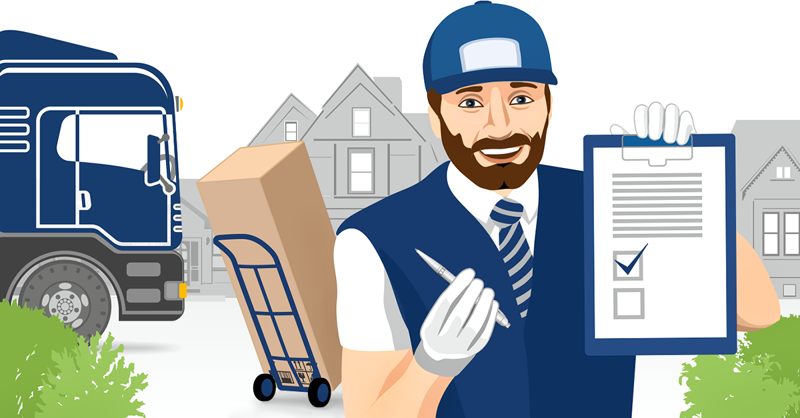The last mile of delivery is a challenge for all carriers, and freight shipments are no exception. While most last-mile discussions center around e-commerce B2C parcel delivery, freight companies are now seeing opportunities for themselves in this high-growth segment.
The goal for all carriers — whether they are handling e-commerce parcels or freight — is to move B2C orders to their destination in the most cost-effective way possible, while delivering the experience customers are expecting. The challenges are particularly acute because home delivery has never been a focus of less-than-truckload (LTL) and truckload (TL) freight carriers.
Last-Mile Freight
Almost every large LTL trucking company, including Swift, J.B. Hunt, XPO Logistics, and ArcBest Corp. has a division specializing in last-mile, “white glove” service. XPO Logistics handles more than 12 million last-mile deliveries annually of items like furniture, refrigerators, ovens, treadmills, and computers. It credits its success to a network of more than 5,000 contract carriers.
A global market study conducted by ARC Advisory Group in 2016 found that startups that used the ‘Uber-style’ technology in the last mile of freight shipping had raised about $120 million since the beginning of 2015. Other newcomers include Cargo Chief, Cargomatic, Deliv, Fleet, Instacart, and Transfix. Both startups and existing carriers are investing in enterprise shipping software to make this last segment of delivery a permanent part of their business.
Do It Yourself
Over the last few years, many freight carriers have been supporting retailers with a Direct-to-Consumer (DTC) model to serve the B2C market better. With customers getting used to the idea of large items being delivered to their homes, sellers realize they can cut out some of the additional handling that comes with using a third-party carrier. Shipping from a warehouse directly to the end customer (and not a carrier’s cross-dock) creates a closed loop network from the warehouse that saves both time and money.
Considerations
Not every freight company is on board with the DTC model, in part due to the logistical challenges of delivering freight to people’s homes and apartments. In the midst of a driver shortage, last-mile deliveries require both hard skills (e.g., driving, equipment use, white glove setup) as well as soft skills (e.g., customer service, communication).
Freight carriers also struggle with a lack of shipment density that hurts their ability to plan cost-effective routes. Many trucks come back empty. Not all areas are easy to deliver to either. Navigating suburban driveways is a challenge. Urban locations are becoming a bigger challenge as municipal regulations prohibit certain size trucks. Narrow streets, lack of parking spaces, and prowling meter maids present a lot of obvious problems to big trucks and unloading processes. London has banned all heavy trucks from the city, in favor of smaller white vans that perform the last-mile delivery.
Loss prevention is another issue. DTC deliveries usually include orders for many customers. Because the truck may stop at multiple locations and are often delivering high-value goods, creating a process to prevent theft is important.
Despite these obstacles, nature abhors a vacuum. Carriers eager to grow revenue in this market will find a way to make it work, especially in an industry that is so competitive. It only makes sense that new carriers will emerge and existing carriers will continue to upgrade and innovate to serve B2C clients.
